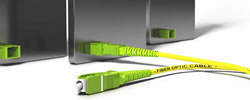How Do You Measure Network Health and Performance
It is important to regularly assess the health and performance of your network, as this has a significant impact on the success of your business. A poorly performing network can impair normal business processes and operations, reducing your business productivity and ultimately, its profitability.

To accurately get a measurement of your network performance, some possible indicators that should be assessed are:
- Network bandwidth: This is a measure of the maximum capacity of your network; it is the maximum amount of data that can be transmitted between two points across the internet. The higher your network bandwidth, the better its performance.
- Throughput: This is the amount of data processed by a network at any given point in time. The more data processed by the network over a defined period of time, the higher its performance.
- Individual device performance: This relates to how individual devices are able to take advantage of the bandwidth and throughput capabilities of the overall network. This is how your customer will judge and measure your network performance.
Factors That Affect Network Performance
There are several factors that can impair the performance of a network which include:
- Network latency: This is the time taken for a piece of data to be transmitted from its origin to its intended destination. This varies depending on the number of hops, the physical distance of the intended destination, and the performance of the devices along the path of transmission.
- Network congestion: This occurs when the maximal capacity of the transmission path is reached. When this occurs, network traffic slows down, and some data packets may be lost. If data packets are lost, especially with TCP transmission, they are re-transmitted which further worsens the network congestion.
- Infrastructure configuration: How data packets are transmitted from origin to destination depends on the network configuration set up by the network administrator. Data prioritization, data encryption, and load balancing are some of the configurations set up by network administrators that may have an impact on network performance.
- Network noise: In the case of an RF network, like a (DOCSIS) cable network, noise getting into the “closed” network can cause degradation of network performance in one or more areas. The noise interferes with the signal devices are sending that contain network traffic.
- Individual device malfunction: individual devices, like modems or routers, can malfunction and affect other devices on the network. Failure of this type could affect one or many other users, depending on the device problem.
At Promptlink, we offer solutions that check the performance of the network, plus the health of routers, cable modems, and other devices. These solutions can be for external testing of devices for cable companies, testers and 3PL companies. Promptlink also provides network monitoring solutions to check the health of the network and devices on the live network. We stay ahead of the industry to provide the latest testing, provisioning and monitoring solutions to ensure that your network are operating at peak capacity which enhances the performance of your business network. Learn more about our varied broadband solutions.
What is Wi-Fi 7? The New, Faster Standard
Trends in Set-Top Box Deployments
How Network NoiseHawkAI Is Changing Network Monitoring
Deciding if Automated Testing is Right for Your Application
Using AI Technology to Automate Pinpointing Upstream Noise
Pandemic-Related Component Shortages and the Impact Across the Broadband Industry
What is Wi-Fi 6 and Why is It Important?
What is CPE and Why Does It Matter?
Rural Broadband and FCC Expansion Explained
The Challenges of Monitoring Upstream Noise in a Remote PHY Environment
Why Promptlink Automated STB Solution is Right for You
What is broadband network noise and why is it difficult to find?
How Do You Measure Network Health and Performance









